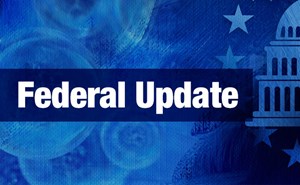Joint Statement issued on April 27, 2020:
The American College of Emergency Physicians (ACEP) and the American Academy of Emergency Medicine (AAEM) jointly and emphatically condemn the recent opinions released by Dr. Daniel Erickson and Dr. Artin Massihi. These reckless and untested musings do not speak for medical societies and are inconsistent with current science and epidemiology regarding COVID-19. As owners of local urgent care clinics, it appears these two individuals are releasing biased, non-peer reviewed data to advance their personal financial interests without regard for the public’s health.
COVID-19 misinformation is widespread and dangerous. Members of ACEP and AAEM are first-hand witnesses to the human toll that COVID-19 is taking on our communities. ACEP and AAEM strongly advise against using any statements of Drs. Erickson and Massihi as a basis for policy and decision making.
Additional Information
While ACEP believes strongly that practicing emergency physicians have valuable insight into the COVID-19 pandemic, specialists in Immunology, Infectious Disease, and Epidemiology, including Dr. Anthony Fauci, are the most qualified at interpreting this data and making representations.
The data cited by Drs. Erickson and Massihi is extrapolated from a small population to the state of California, resulting in misleading conclusions regarding the mortality of COVID-19. Their data is flawed and represents selection bias. In order for data to be extrapolated to a population, the investigator must assure that the populations are homogeneous, and in this case they are not.
For example, it is stated in the video that in one area of California, there is a 12 percent positive test rate. That is then erroneously used to conclude that there are almost 4.7 million cases in the entire state of California. But that framing only looks at the 12 percent of people who had access to a test. California is a large, diverse state, and it is unlikely that any one area will be representative of the state at large. As testing nationally is limited, there likely is a larger pool of people who have yet to receive a test but have a high probability of having the disease or who are asymptomatic and potentially contagious. What we do know is that the number of cases in most states is growing. The same extrapolation was used in his New York example, when again, the only people tested were those who were symptomatic. Because of the limited availability of testing and the as yet unknown sensitivity and specificity of the various tests, we cannot use this data to extrapolate to larger populations.
The speaker discusses the fatality rate in New York and states that there are 19,000 deaths out of 19 million people in New York, so New York has a fatality rate of 0.1 percent. However, he is concluding a fatality rate based on the total population—both symptomatic and healthy, which is a contradiction to how he calculated the fatality rate in California. Further there are a large number of patients who have yet to recover, and many of them whom remain on life support or are likely to die.
Another concerning misuse of data include comparisons to the flu despite different methodology for calculating deaths. Comparing flu deaths and COVID-19 deaths are apples and oranges until the same methodology of calculating flu deaths is applied to COVID-19 deaths. Additionally, final flu data is calculated after the season is over. The physician in the video is comparing two months of COVID-19 data, which again at this point is incomplete. It is not scientifically valid to make a comparison to the completed six-month flu season.
There are other faulty data issues in their video, including basic scientific errors that call the conclusions into question (e.g., they call the flu and COVID-19 “DNA” viruses when COVID-19 and flu are both RNA viruses).
Most concerning for ACEP, they used their “emergency physician” titles to provide credence to their opinions. In any statement that proports to be based on science, data need to be carefully analyzed and the conclusions limited by the data source and integrity. By presenting themselves as authorities, and without fully disclosing their conflict of interest, they were misleading the public.
This is not to say that individuals should not have their own opinions, or that their opinions will not turn out to be true. Emergency physicians should speak those opinions in controversies such as this. However, in doing so, we must be careful not to overstate our qualifications, particularly when we are in domains outside of medicine. As emergency physicians, we should be all too familiar with other specialties and providers who feel qualified to practice in our domain without our level of education. Opinions vary on one’s experience; emergency physicians in New York City are likely to feel differently.
ACEP feels strongly the traction and popularity of these dangerous conclusions had the potential to lead to bad policy decisions and public health outcomes.





